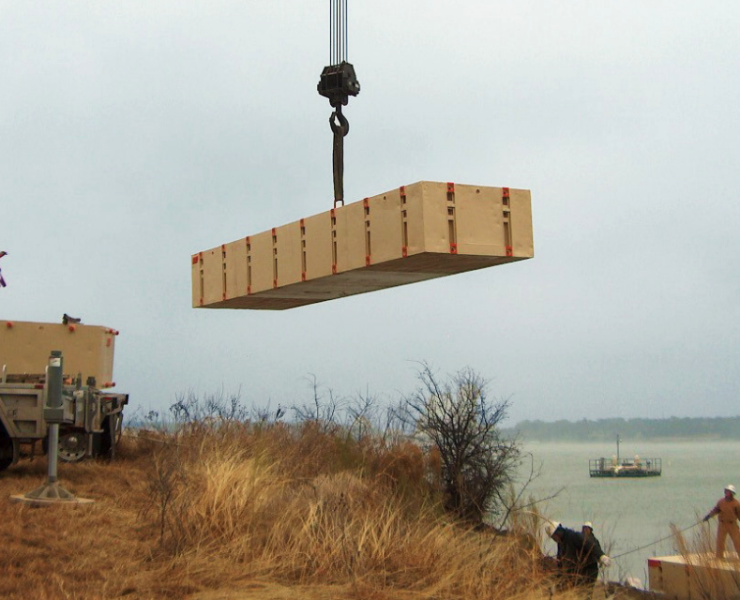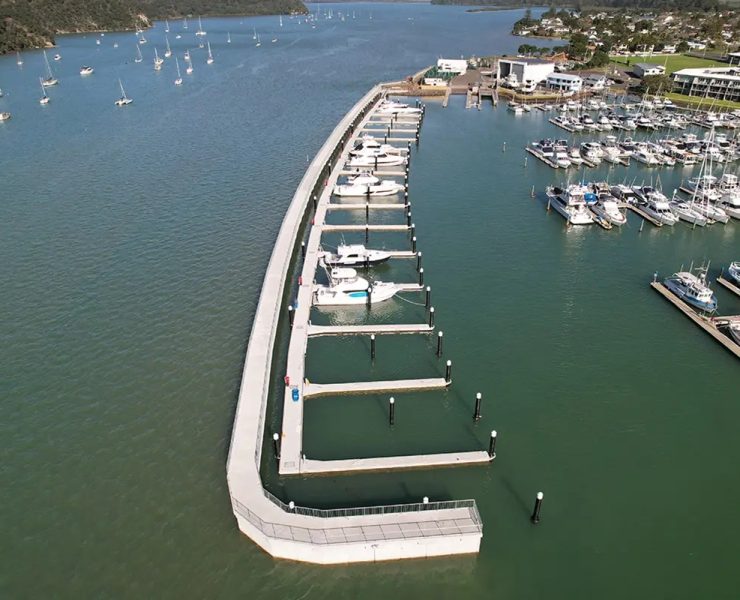Marine Drilled Shafts and Anchors Used in Underwater Construction
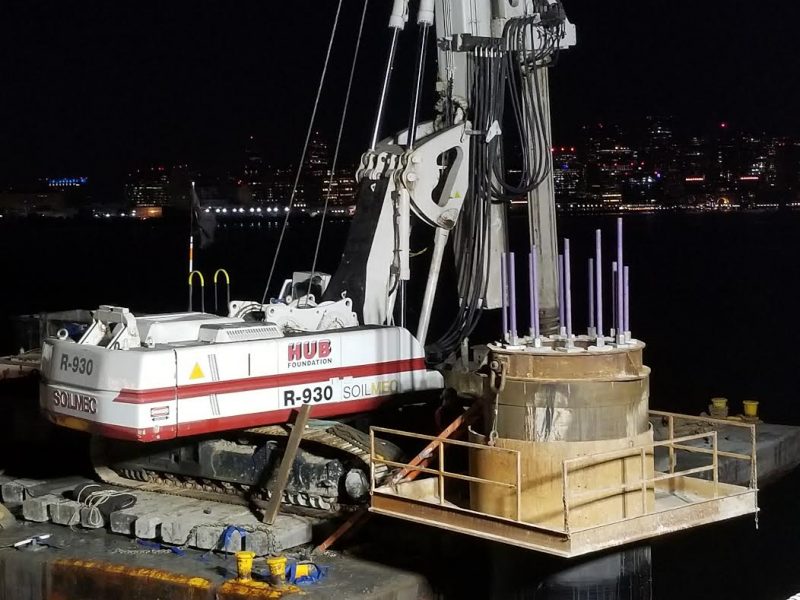

View the complete article here.
Marine drilled shafts and anchors provide the critical support needed for structures like offshore platforms and undersea tunnels, standing firm against the relentless push and pull of the sea and other marine environments. This guide explores the techniques and innovations that enable these foundations to secure some of the most impressive marine projects.
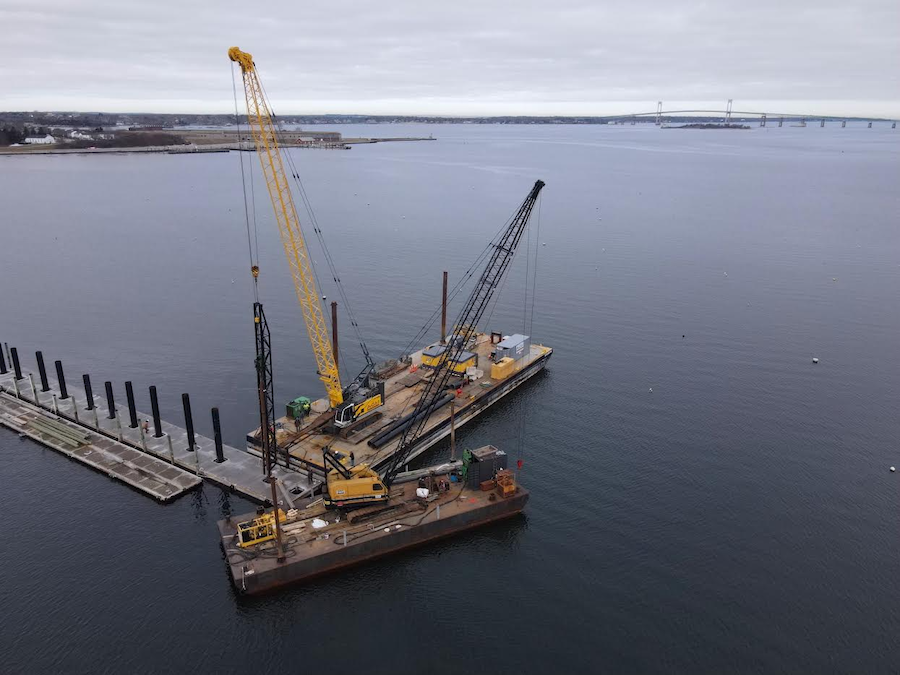
The Basics of Marine Drilled Shafts and Anchors
Marine drilled shafts and anchors are foundational elements in the construction of structures that extend into or are surrounded by bodies of water. A drilled shaft, commonly referred to as a caisson or drilled pier, is a deep foundation that is created by drilling a large diameter hole into the ground (or seabed) and filling it with concrete and reinforcing materials. In marine applications, these shafts must be able to withstand not only the load of the structure but also the dynamic forces of the aquatic environment—such as waves and currents.
Anchors, on the other hand, are devices that are embedded in the seabed to hold structures like floating docks, ships, and offshore platforms in position. In the context of fixed structures, anchors may be used to provide additional lateral support for drilled shafts or to secure the seabed slope around the construction site.
Structures Relying on These Foundations
Marine drilled shafts and anchors provide the stability and support necessary for various types of marine infrastructure—including, but not limited to:
- Bridges: For bridges extending over water, drilled shafts are sunk into the riverbed or seafloor to support the bridge’s piers. The anchors may be used to resist lateral loads, especially in areas prone to strong currents or where the bridge may be subject to seismic activity.
- Offshore platforms: Oil rigs and wind turbines use both drilled shafts and anchors to maintain their position in deep waters where traditional foundations are not feasible. These structures require a secure foundation to withstand the harsh marine environment and the significant forces exerted upon them by winds, waves, and potential collisions.
- Floating docks and piers: Anchors are crucial for floating structures, ensuring they stay in place while allowing for some movement. The combination of flexibility and security is key to their functionality.
- Seawalls and coastal defenses: Drilled shafts can form the backbone of sea defenses, which protect the shore from erosion. They are also part of the foundation systems for structures built close to the shore, such as promenades or buildings.
Key Materials and Technologies Used in Underwater Construction
The choice of materials and technologies for marine construction must take into account the corrosive and dynamic nature of the marine environment:
- Concrete and steel: High-strength concrete, often with corrosion-resistant additives or coatings, is the primary material for drilled shafts due to its durability and weight. Steel, especially when coated or alloyed to resist corrosion, is used for reinforcement bars within the concrete and for the construction of anchors.
- Remote operated vehicles (ROVs): These underwater robots are efficient for inspection and construction tasks at depths that would be unsafe or impractical for human divers.
- Underwater concrete placement techniques: Tremie pipes are used to place concrete underwater, ensuring that the material is not compromised by the water during placement.
- Dynamic positioning systems: These computer-controlled systems are used to maintain the precise location of construction vessels when installing drilled shafts or anchors, using thrusters and GPS technology.
- Sonar and laser scanning: Accurate mapping of the seafloor and construction site is essential and achieved through sonar and laser scanning technologies, which provide high-resolution images and measurements.
Challenges in Underwater Construction
Constructing foundations in a marine environment comes with a set of challenges not typically encountered on land. The dynamic nature of water bodies introduces several complexities:
- Water currents: These can vary greatly in strength and can change direction, impacting the stability and accessibility of a construction site. Currents can also pose risks to both personnel and equipment, making the placement of drilled shafts and anchors more difficult.
- Saltwater corrosion: Saltwater is highly corrosive to many construction materials, including metals and concrete. Over time, it can severely weaken structures that are not adequately protected or designed with corrosion-resistant materials.
- Underwater visibility: Poor visibility underwater can hinder construction operations, especially when precision is required for drilling or positioning anchors. This requires the use of specialized equipment to monitor and guide the construction process.
Technical Difficulties Specific to Drilling Underwater and Installing Anchors
The act of drilling and installing anchors underwater is often confronted by technical hurdles such as:
- Pressure differentials: The pressure at depth can complicate drilling processes and affect the integrity of materials, requiring careful planning and execution.
- Equipment adaptability: Standard drilling equipment may not perform well under water without modifications. Subsea equipment needs to withstand pressure, water flow, and corrosion—all while being precise and reliable.
- Anchor placement: Ensuring that anchors are placed correctly and achieve a secure hold in the seabed is complex, often requiring multiple attempts and adjustments due to the unpredictable nature of subaqueous soils.
Environmental and Ecological Considerations
Environmental protection is a primary concern during underwater construction—with stringent regulations often in place, including:
- Habitat disruption: Drilling and anchoring activities can disrupt the seabed habitat, affecting flora and fauna. It is crucial to assess environmental impact and develop methods to minimize damage.
- Spills and contamination: The risk of contaminating the water with lubricants, hydraulic fluids, or other substances from construction machinery is a concern. Using environmentally safe products and containment strategies is essential.
- Noise pollution: Underwater construction can generate significant noise, which can impact marine life—especially mammals that rely on echolocation. Monitoring and mitigating noise levels is a critical aspect of project planning.
- Regulatory compliance: Adhering to environmental regulations and securing the necessary permits can be a complex process, requiring thorough environmental impact assessments and ongoing monitoring.
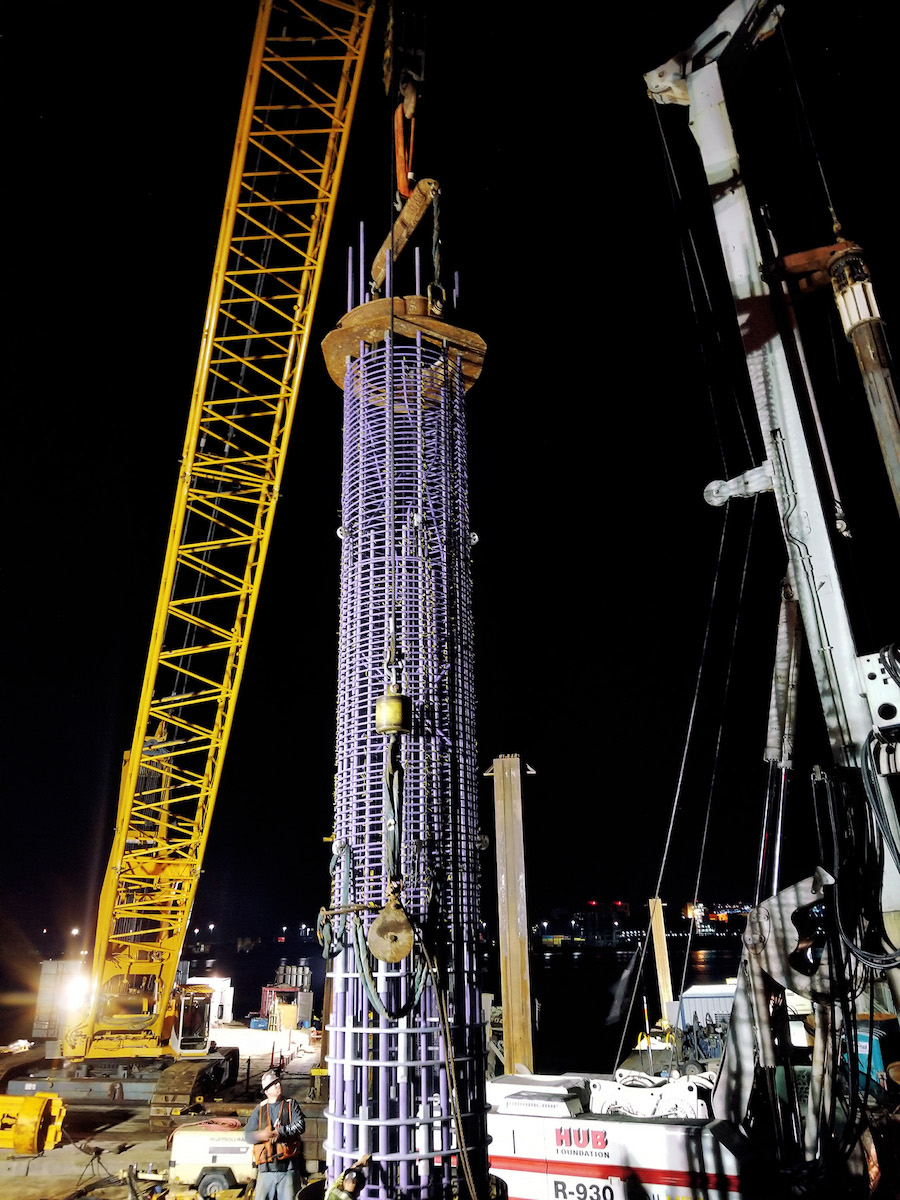
Innovative Techniques and Technologies
The construction of marine drilled shafts and anchors has seen remarkable advancements in recent years. These improvements have not only streamlined construction processes but have also enhanced the safety and longevity of marine structures.
Modern Techniques in the Construction of Marine Drilled Shafts and Anchors
- Underwater hammer drilling: This technique allows for more efficient drilling in hard substrates by using a hammering action combined with rotation. The process is faster and more reliable than traditional rotary drilling, especially in challenging seabed conditions.
- Reverse circulation drilling: Used to minimize the disturbance to marine sediments, this method involves circulating drilling fluid upwards through the drill pipe—which allows for cleaner and more accurate shaft excavation.
- Synthetic polymer fluids: Replacing traditional bentonite slurries, these fluids provide better support to the excavation walls during drilling—reducing the risk of collapse and minimizing the environmental impact.
Advancements in Materials Science
- Corrosion-resistant alloys: New alloys and composite materials have been developed for marine construction that resist corrosion better than conventional materials, significantly extending the lifespan of marine structures.
- Protective coatings: Advanced coatings are applied to steel elements to protect them from the saline environment. These coatings are becoming more environmentally friendly while also providing superior protection.
- Ultra-high performance concrete (UHPC): UHPC is being used for drilled shaft construction due to its excellent strength and durability properties. Its dense matrix provides superior protection against chloride ingress and freeze-thaw cycles.
Integration of Technology for Enhanced Outcomes
The integration of these techniques and technologies is not independent of one another. For instance, ROVs might employ hammer drilling heads for precise operations. Similarly, the use of UHPC is often monitored by automated systems to ensure proper curing and strength development.
The culmination of these innovative approaches represents a step forward in marine construction, offering safer and more reliable methodologies for developing the necessary foundations in marine environments.
Case Studies
The following case studies provide real-world examples of how innovative techniques and technologies have been successfully applied to overcome the challenges of underwater construction.
Example 1: Bridge Foundation in Strong Current Areas
One of the most challenging aspects of bridge construction is dealing with the foundations in areas with strong river or tidal currents. The construction of the Delta Bridge is a prime example. The project was located in an area known for its treacherous currents, which could disrupt the stability of floating construction platforms and the accuracy of drilling.
To overcome this obstacle, engineers used an innovative floating barge equipped with a dynamic positioning system that could hold its position against the currents. This system allowed for precise placement of the drilled shafts. In addition, ROVs monitored the shaft excavation process in real-time—ensuring that any deviations could be corrected immediately.
Example 2: Offshore Wind Farm Anchor Installations
The Seagreen Wind Farm project illustrates the complexities of installing anchors for offshore turbines. The seabed composition varied greatly across the site, requiring different anchoring techniques. For areas with soft sediments, suction bucket anchors were used—which could be installed quickly and with minimal noise, reducing the impact on marine life. In rockier areas, drilled anchors were placed—using remotely operated drilling rigs that provided accurate insertion without the need for divers.
The project used a combination of real-time sonar imaging and automated drilling to adjust to the variable conditions. The anchors were tested using load-out tests, ensuring their stability in the challenging marine environment.
Example 3: Underwater Tunnel Supports
The construction of the Aquanex Tunnel, a subsea tunnel designed to facilitate vehicle and train traffic, required supports that could withstand both the pressures of the ocean above and the seismic activity in the region. The solution was a series of massive drilled shafts, reinforced with a central steel spine and surrounded by high-strength concrete.
Specialized underwater robots were deployed to clear the seabed and prepare the shaft locations, while a custom-made floating drilling rig was used to create the shafts. The concrete used was a specially formulated mix, incorporating microfibers and corrosion inhibitors to enhance durability. The installation process was carefully monitored with acoustic and laser-based positioning systems, ensuring that the supports were perfectly aligned and secure.
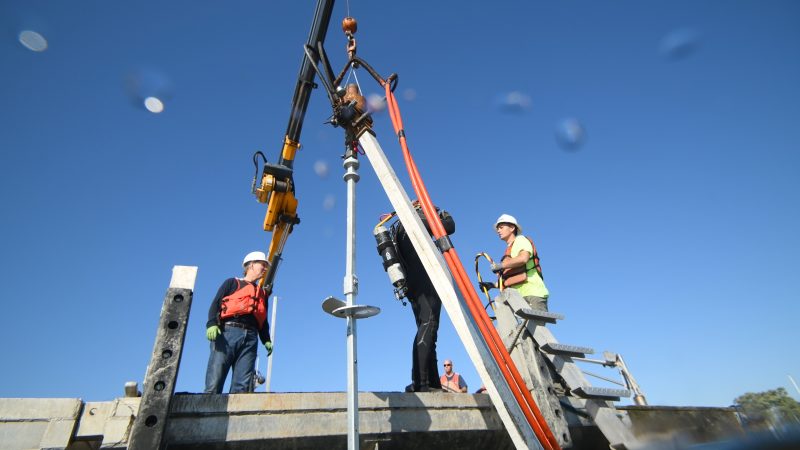
Conclusion
Marine drilled shafts and anchors are pivotal in building structures that withstand the rigors of aquatic environments. Their development has enabled us to erect bridges, install offshore platforms, and stabilize underwater tunnels—showcasing remarkable engineering feats.
We are witnessing a shift towards eco-friendly materials and smarter construction robots, signaling a new era of efficiency and environmental stewardship. And, the future promises even more robust and sustainable marine structures—built with precision and designed to last.
Resources
- “Underwater Technology: Offshore Foundations and Structures” by Subrata Chakrabarti
- “Advanced Marine Structures” by Srinivasan Chandrasekaran
- “Handbook of Offshore Engineering” by Subrata K. Chakrabarti
- “Underwater Acoustics and Ocean Dynamics” by the Marine Technology Society
- “Underwater Construction Techniques” by Samuel J. T. S. Kramer
- “Marine Concrete Structures: Design, Durability and Performance” by Mark Alexander
- “Offshore Structures: Design, Construction and Maintenance” by Mohamed A. El-Reedy
- “Subsea Engineering Handbook” by Yong Bai and Qiang Bai
View the complete article here.
What are marine drilled shafts used for in underwater construction?
Marine drilled shafts, also known as caissons or drilled piers, are deep foundations used in underwater construction to support structures like bridges, offshore platforms, and seawalls. They provide stability and can withstand dynamic forces from waves and currents.
What materials are commonly used for marine drilled shafts and anchors?
Marine drilled shafts and anchors typically use high-strength concrete and corrosion-resistant steel. Concrete is often enhanced with additives for durability, and steel is coated or alloyed to resist corrosion, ensuring long-term stability in marine environments.














